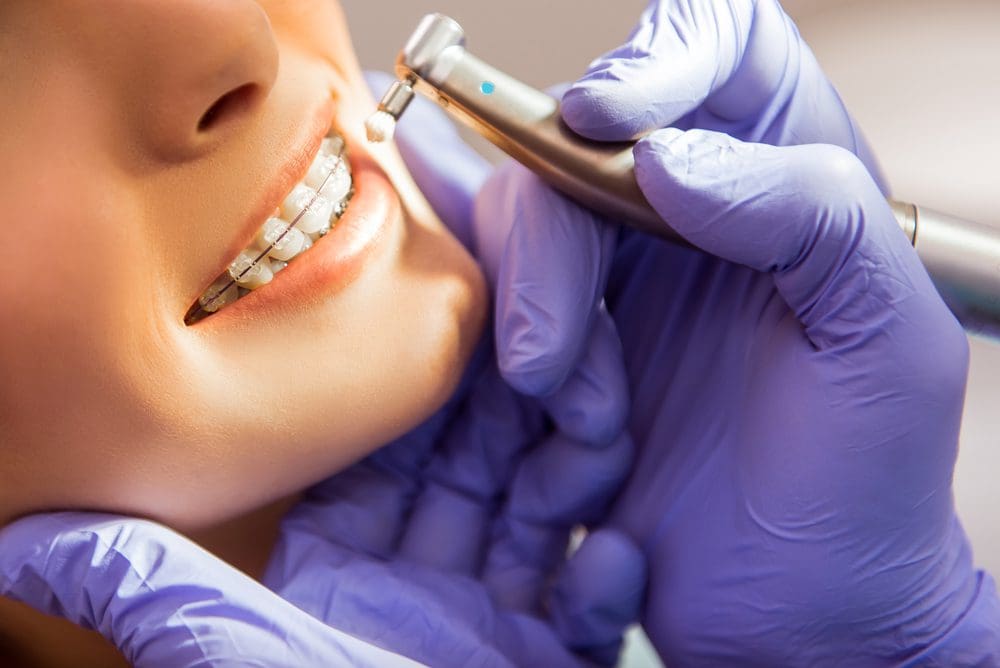Your Overview to Cumming Invisalign: Straightening Teeth with Style and Convenience
Your Overview to Cumming Invisalign: Straightening Teeth with Style and Convenience
Blog Article
Comprehensive Overview to Orthodontics Treatments for Dealing With Dental Imbalances
In the realm of orthodontics, the journey to achieving a completely straightened smile includes a myriad of procedures tailored to correct dental misalignments. From traditional braces to unseen aligners and even medical alternatives, the area of orthodontics uses an array of remedies to resolve differing levels of oral irregularities. Comprehending the complexities of each procedure, including their mechanisms, benefits, and potential downsides, is essential in making informed choices concerning one's orthodontic therapy. As we navigate through the extensive guide to orthodontic treatments for dealing with oral imbalances, the complex details of each method will certainly unravel, clarifying the course toward a functional and harmonious dental alignment.
Orthodontic Procedures Introduction

Normal adjustments and monitoring are vital components of orthodontic therapy to guarantee development is on track and to make any kind of necessary modifications along the method. By going through orthodontic treatments, clients can not only accomplish a straighter grin yet also enhance their general dental health and wellness and feature.
Typical Braces: Just How They Function
When thinking about orthodontic treatments for dental imbalances, traditional dental braces stick out as a tried and true method for dealing with teeth placing. Traditional braces include brackets, cables, and bands that collaborate to use continual pressure on the teeth, progressively moving them into the wanted positioning. The braces are connected to the teeth utilizing an unique adhesive, and the wires are threaded with the braces. By readjusting the tension of the cables, orthodontists can regulate the instructions and force put on each tooth, guiding them into correct alignment in time.
As stress is used to the teeth through the dental braces, the bone bordering the teeth is improved to sustain the brand-new tooth settings. Clients will require normal adjustments at the orthodontist's office to make sure the dental braces proceed to apply the correct pressure for efficient teeth motion.
Invisible Aligners: Cons and pros
Unseen aligners offer a discreet and hassle-free alternative to traditional dental braces for fixing oral imbalances. These clear, customized trays are basically unseen when used, making them an enticing option for individuals seeking a more visually pleasing orthodontic therapy. Among the main advantages of unseen aligners is their removability, enabling for simpler upkeep of oral health compared to typical braces. Patients can eliminate the aligners before consuming or brushing their teeth, minimizing the danger of food snap on teeth obtaining stuck in the device and streamlining the cleansing process.

Surgical Orthodontic Options
Surgical treatments in orthodontics present practical options for addressing intricate oral misalignments that may not be effectively resolved via traditional orthodontic treatments. While conventional braces and unseen aligners can fix many orthodontic issues, particular instances need medical intervention to achieve optimum outcomes. Surgical orthodontic choices are usually recommended for extreme malocclusions, considerable jaw discrepancies, and instances where the underlying bone structure needs alteration to accomplish proper alignment.
One usual surgical orthodontic procedure is orthognathic surgery, which includes repositioning the jaws to deal with useful problems such as problem chewing or speaking. This surgical treatment is frequently executed in collaboration with an orthodontist that aids line up the teeth prior to and after the procedure. Surgical orthodontics might also include treatments to subject influenced teeth, remove excess periodontal cells, or reshape the jawbone to produce a more harmonious face profile.
Prior to considering medical orthodontic alternatives, clients undertake a detailed assessment to establish the requirement and possible advantages of such interventions. cumming orthodontist. While surgery may my site appear daunting, it can substantially boost both the feature and aesthetic appeals of the smile in instances where conventional orthodontic treatments fail
Retainers and Post-Treatment Treatment

Post-treatment care entails following the orthodontist's instructions carefully. This might include appropriate oral hygiene practices, attending follow-up appointments, and wearing the retainers as suggested. Failing to follow post-treatment treatment directions can lead to relapse, where the teeth gradually return in the direction of their initial placements. Regular retainer wear, excellent oral health, and normal oral examinations are crucial for keeping the results accomplished through orthodontic surgery and making sure the lasting security of the corrected dental alignment.
Verdict
In verdict, orthodontic procedures use numerous choices for correcting oral misalignments. Surgical orthodontic alternatives are available for much more extreme misalignments. In general, orthodontic treatments can effectively boost dental health and wellness and visual appearance.
As we browse via the extensive guide to orthodontic treatments for correcting dental imbalances, the detailed details of each method will unravel, shedding light on the path towards a unified and functional dental placement. - cumming braces
One of the most usual orthodontic therapies is the usage of dental braces, which are composed of steel braces and cords that use mild pressure to slowly move teeth into the preferred setting.When thinking about orthodontic therapies for dental misalignments, conventional braces stand out as a time-tested method for correcting teeth positioning. Additionally, invisible aligners may not be suitable for complex orthodontic concerns that call for even more considerable teeth motion, as they are commonly recommended for moderate to moderate cases. Retainers are customized orthodontic gadgets developed to hold teeth in their remedied settings after the completion of orthodontic treatment.
Report this page